Native Blanket Flower Blankets Gardens in Bold Color
Updated: Apr. 17, 2024
Blanket flower is a native wildflower that is easy to grow from seed. It is reliable and adaptable, and will fill your garden with beauty.
On This Page
Blanket Flower Care and Growing Tips
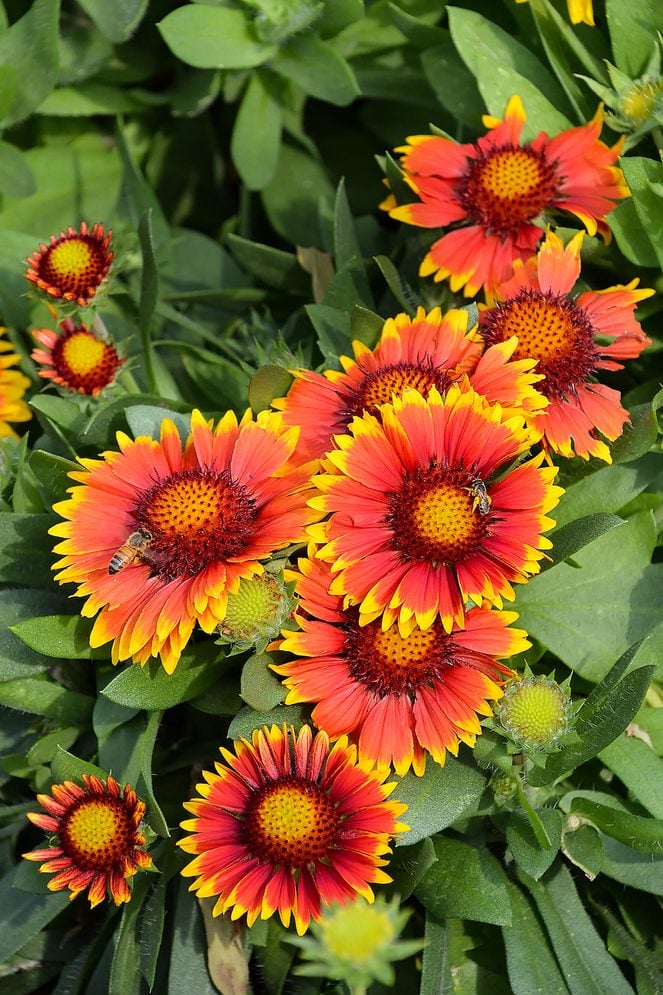
- Botanical name: Gaillardia spp.
- Zones: 3 to 10
- Attracts: Birds, bees and butterflies
- Light needs: Full sun
- Size: 2 to 3 feet tall
- Grown for: An explosion of color and drought tolerance
- Foliage: Long gray-green leaves
- Soil: Well draining
Few plants offer a bright sunburst of color quite like blanket flower (Gaillardia pulchella). Emerging in late spring, the blooms come in a combination of yellow, orange, red and maroon and stick around until September. Budget gardeners looking for a terrific pop of color in their gardens from spring through fall (and nearly year-round in zones 9 and 10) shouldn’t pass up one of our best native wildflowers. Its bright yellow and orange bi-color flowers are produced in abundance for months on end. The plants are easily started from good quality seed.
Blanket Flower Benefits
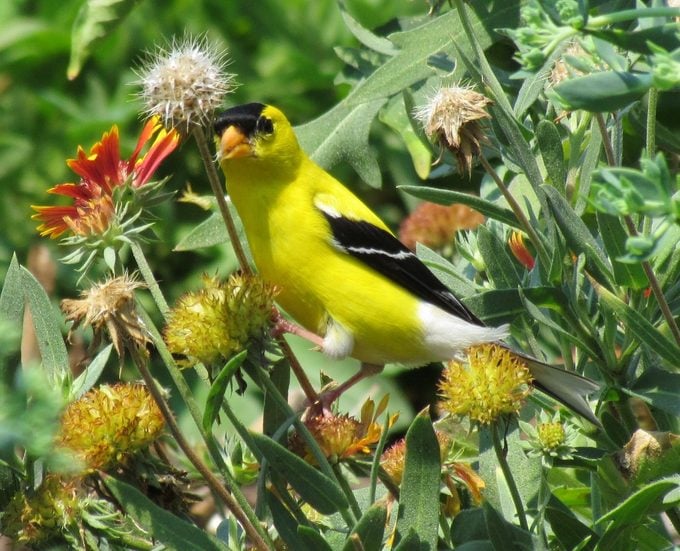
Blanket flower has made multiple Birds & Blooms “best lists”, including flowers that beat the heat and the top 10 plants for sandy soil. This easy-to-grow wildflower is great for pollinators and wonderful for cutting, too. You’ll often find it along roadsides and in wildflower meadows, and anywhere native flowers are emphasized. It does well in containers and is even salt-tolerant. Rabbits usually give it a pass, but goldfinches will snack on the seeds.
These plants ask for nothing but lots of sun, and the occasional bit of rain. However, blanket flower does poorly in clay soil.
Is Blanket Flower an Annual or Perennial?
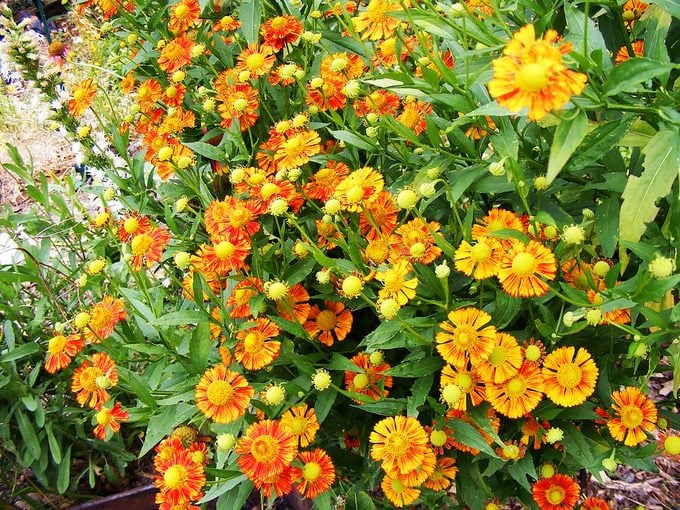
“This plant (above) has been growing in our garden every year for two to three years. The bees love the flowers. Can you tell us what it is?” asks Birds & Blooms reader Thomas Marnocha of South Bend, Indiana.
Garden expert Melinda Myers says, “Your bee-friendly plant is a blanket flower, also known by its botanical name, Gaillardia. There are annual, biennial and perennial species of these plants that flower freely all season long.
Gaillardias thrive in hot, dry conditions and fast-draining soils. In fact, the profuse flowering and intolerance for poorly drained soil often results in perennial varieties not surviving the winter, especially those growing in the North. Fortunately, this does not seem to be a problem in your garden.
For those who have not had the best luck with blanket flowers surviving the winter, try cutting the plant back to six inches in late summer. This encourages the plant to redirect energy from flower and seed production to storage for winter survival.”
Start Blanket Flower From Seed
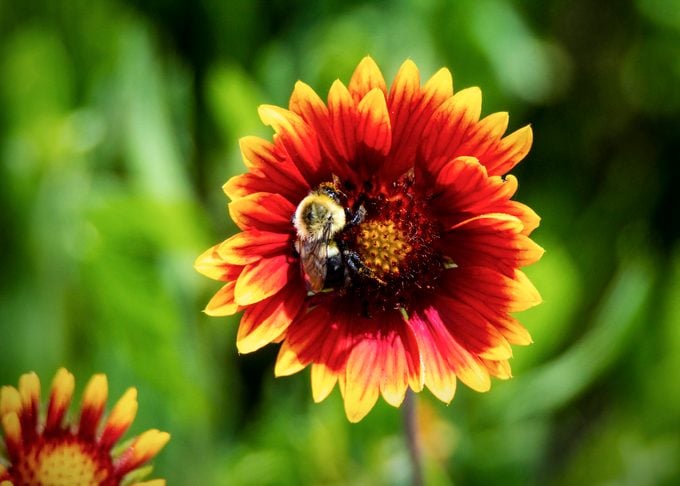
Interestingly, I often come across articles indicating this plant is difficult to start from seed. This always makes me laugh. My own yard is full of Gaillardia and all of it comes from a single packet of seed I purchased years ago from the Florida Wildflowers Growers Cooperative.
From a single $3 investment, I have reaped probably thousands of blooms over the years, on dozens and dozens of plants. They die back after a freeze, and sprout again nearby a few weeks later, Blanket flower gives me reliable blooms here in Florida from late February until winter returns again.
If you live in a colder growing zone, as fall approaches, leave flower stalks and seed heads standing to help the plant become more winter hardy.
Learn how to grow Shasta daisies in your garden.
Blanket Flower Cultivars to Try
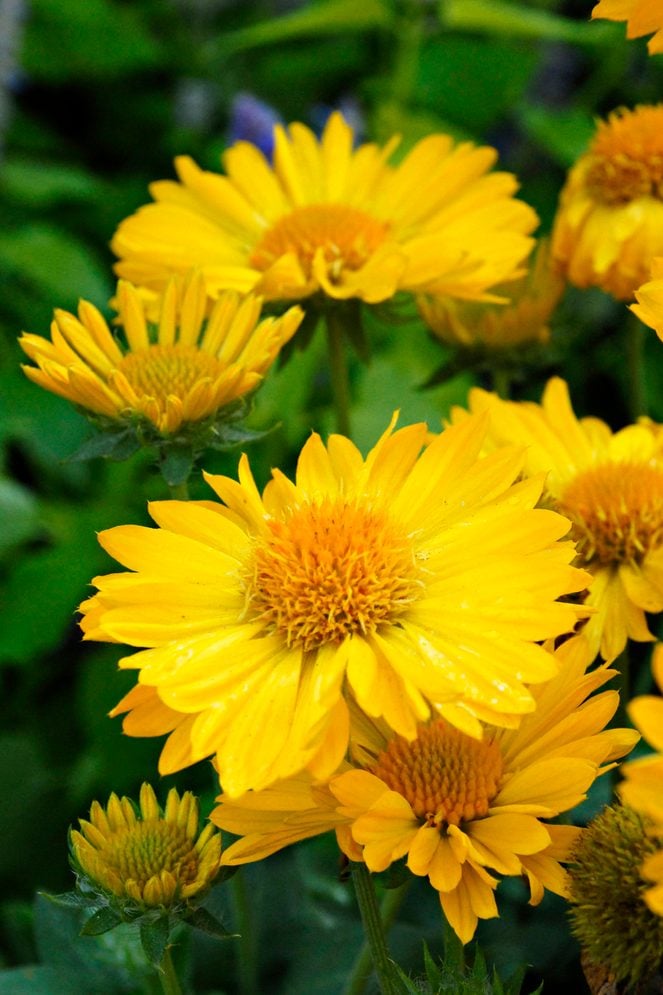
There are also several other Gaillardia species native to the U.S. Many have great value for wildlife or in a cutting garden. You can find single colors, a “pincushion” effect, and more. Mesa Red’s deep red-orange flowers are a dramatic magnet for butterflies. For something a little sunnier, try cheery Mesa Yellow. Arizona Sun also offers classic bicolor.
Next, check out our complete guide to growing coneflowers.
About the Expert
Melinda Myers is the official gardening expert for Birds & Blooms. She is a TV/radio host, author and columnist who has written more than 20 gardening books. Melinda earned a master’s degree in horticulture from the University of Wisconsin-Madison.
Sources
Why Trust Us
For nearly 30 years, Birds & Blooms, a Trusted Media Brand, has been inspiring readers to have a lifelong love of birding, gardening and nature. We are the #1 bird and garden magazine in North America and a trusted online resource for over 15 million outdoor enthusiasts annually. Our library of thousands of informative articles and how-tos has been written by trusted journalists and fact-checked by bird and garden experts for accuracy. In addition to our staff of experienced gardeners and bird-watchers, we hire individuals who have years of education and hands-on experience with birding, bird feeding, gardening, butterflies, bugs and more. Learn more about Birds & Blooms, our field editor program, and our submission guidelines.




















